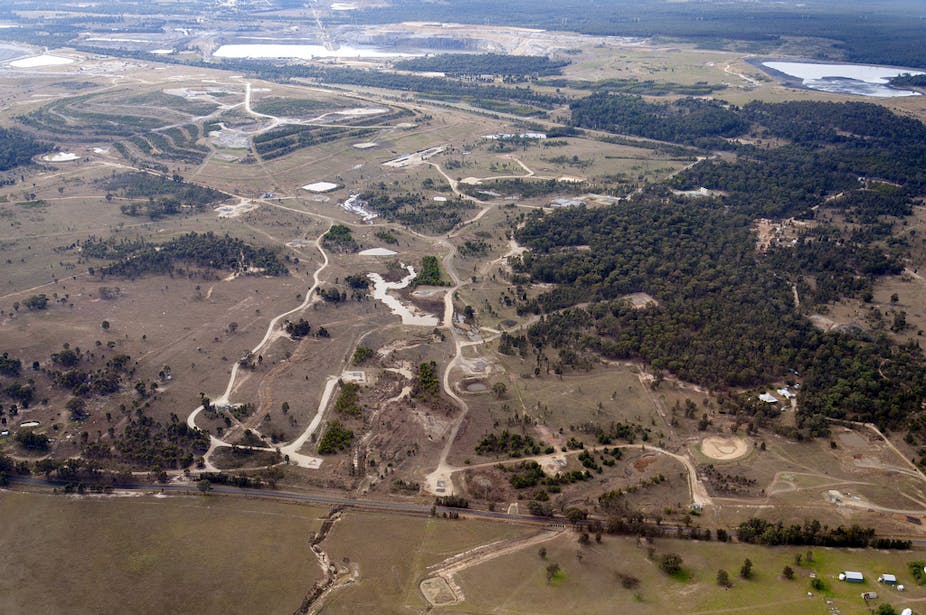The Palmer United Party (PUP) has added to the Coalition’s headaches in the Senate by announcing this week it would seek to remove the so-called “water trigger” from the government’s “one-stop shop” for environmental approvals.
“We will amend the bill so the water trigger stays in federal hands,” PUP’s Western Australian senator Dio Wang said.
Former MP Tony Windsor, the architect of the water trigger created under the Gillard Government, calls the proposed amendments a “retrograde step”.
The one-stop shop — a key part of the Coalition’s election promises to reduce business regulation — would see federal powers to approve projects that impact on matters protected under national laws shifted from the Federal environment minister to the States.
Recent developments approved by the minister include dredging at Abbot Point and Australia’s largest coal mine in Queensland.
What is the Coalition’s beef with the water trigger?
The “water trigger” is one of nine matters of national environmental significance protected under Australia’s national environmental laws, the Environment Protection and Biodiversity Conservation Act (EPBC Act).
That means if a project, such as a mine, is likely to have a significant impact on water, it must be assessed and approved by the Federal environment minister. Existing projects approved prior to the new trigger are not caught by it.
It was added to the Act in 2013 by the Gillard Government. Tony Windsor championed it being added in response to community concerns over poor regulation by the States of the impacts of coal seam gas and mining projects on water resources.
Thorn in the side of the one-stop shop
The Coalition does not propose to remove the water trigger.
Rather, it proposes to change the law to allow the final decision to be made by State and Territory governments on projects assessed under the water trigger.
Tony Windsor — playing a very good impression of a sly fox — managed to have the Gillard government insert a barrier to decisions under the water trigger being handed to State governments under approval bilateral agreements.
The water trigger is the only matter of national environmental significance under the EPBC Act which cannot be handed to State governments to make the final decision over.
The Coalition has a legitimate argument that the water trigger should not be treated differently to the other matters protected under the EPBC Act. On that basis, the changes make sense to support its proposal for a “one-stop shop” to hand federal environmental approvals to the States.
On the other hand Tony Windsor argues that water management is a special case requiring federal oversight that should not be handed to the States.
A wider argument is that the Commonwealth should keep the final say on environmental protection and not proceed with the one-stop shop at all.
Tip of the iceberg for problems
The Coalition’s problems with the water trigger are really just the tip of the iceberg for the problems it is having delivering its “one-stop shop”.
The draft approval bilaterals for NSW and Queensland reveal a much, much bigger problem — that the agreements cover only a small fraction of total State environmental approvals.
This means that the claim of creating a “one-stop shop” for environmental approvals is pure fantasy.
The draft NSW approval bilateral includes some State planning approvals in the one-stop shop system, but does not include approvals granted by local governments. The NSW Department of Planning and Environment states bluntly that the, “vast majority of development applications in New South Wales are for local and regional development and are assessed by local councils”.
The vast majority of NSW planning decisions, therefore, will not be covered by the one-stop shop system.
Similarly, in Queensland, only a small part of State government decisions and no local government decisions will be included in the one-stop shop system under the draft approval bilateral agreement. The draft agreement only includes major projects (of which there are in the order of 10 each year) and mines assessed under an environmental impact statement under State environmental laws. Decisions under the State’s planning laws are not included in the approval bilateral at all (at least at this stage).
This means that the thousands of planning decisions in Queensland each year are not part of the one-stop shop system.
A joke if this was not so serious
Federal Environment Minister Greg Hunt has claimed that the “one-stop-shop will slash red tape and increase jobs and investment, whilst maintaining environmental standards.”
This was clearly hyperbole and political spin from the start.
For one thing, the EPBC Act is only a small part of the overall environmental approval system. There are around 250,000 planning applications each year in Australia. In contrast there are around 400 referrals each year under the EPBC Act.
It is true that the EPBC Act captures most large projects, such as big mines, and that through it the Commonwealth plays an important part of the overall system.
But it does not just capture big developments.
An example of a small development that was captured by the Act was a small residential development at Mission Beach in Queensland that was refused for unacceptable impacts on threatened species.
Yet, under the draft Queensland approval bilateral agreement such a proposal is not included and must still be assessed by the Commonwealth rather than the State. The prospect of ordinary developers being confused by talk of a “one-stop shop” is a stark one.
Contrary to the Minister’s claims, the “one-stop shop” system is creating a more complex system that existed before.
The further it proceeds, the more the “one-stop shop” policy is falling apart and failing to live up to the claims made about it. It would be better known as a “many-stop shop”.

